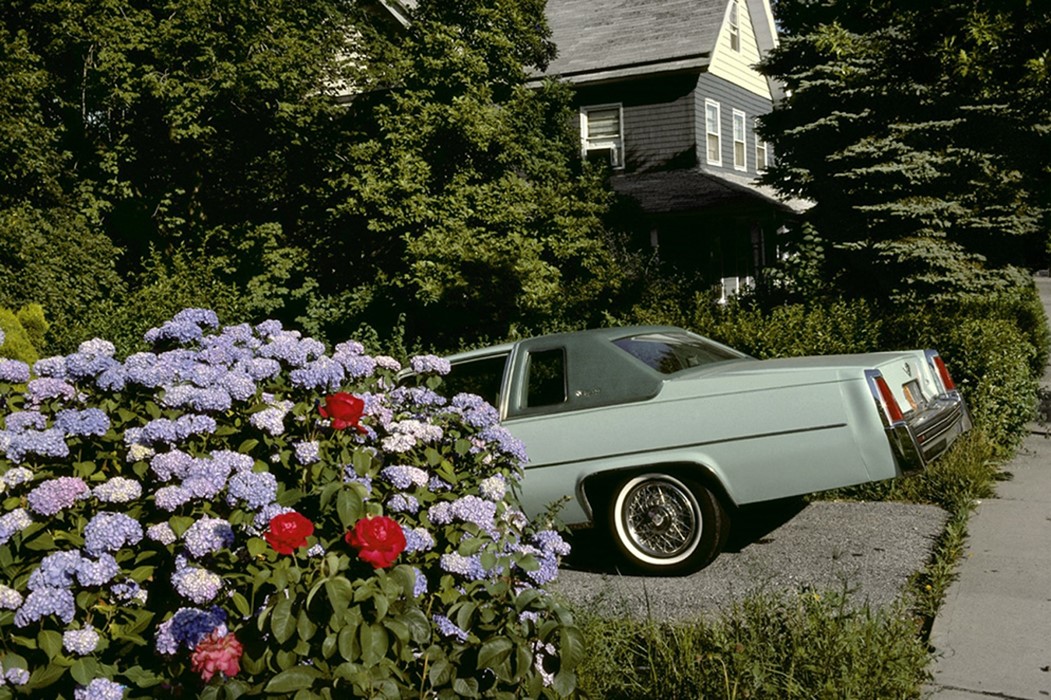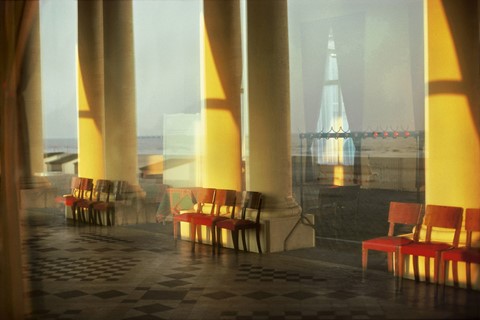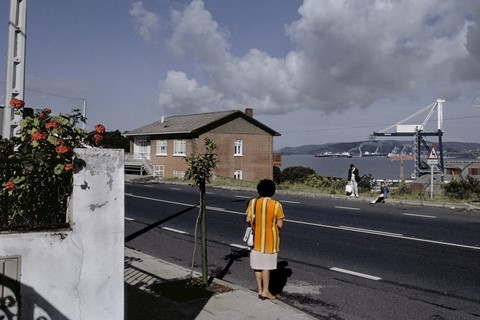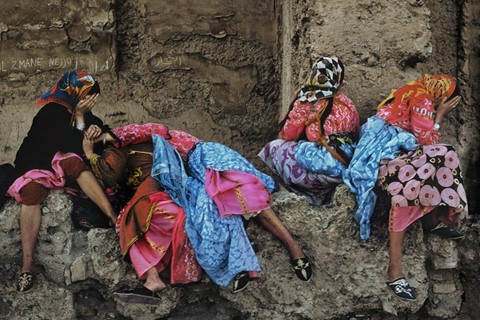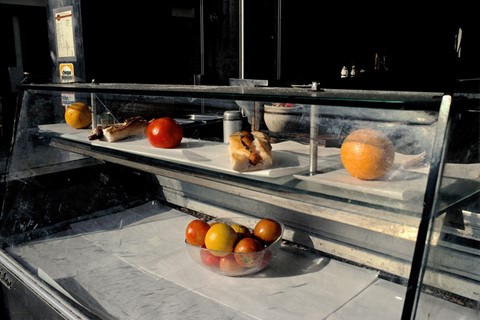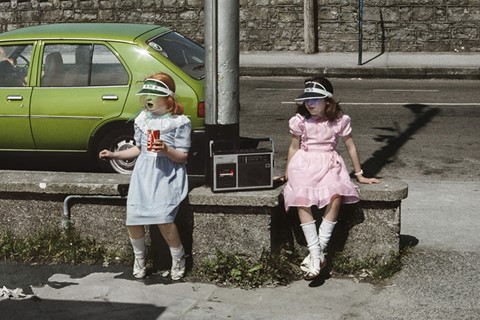“I photograph all the time – it’s a way of being alive and being connected,” the Belgian photographer says, as his first US solo exhibition is staged in New York
If all the world is a stage, Magnum photographer Harry Gruyaert is dancing through life, choreographing his own signature blend of visual poetry. As one of the pioneers of colour photography, Gruyaert has travelled the globe creating an archive of atmospheric portraits of places, evocative landscapes of life that both define and transcend the times in which they were made.
“I’m very interested in the magnetic things about photography: how things are attracting and how things attract me,” Gruyaert, now 79, says from his home in Paris, where he has lived since the 1960s. “There’s a little mystery that I find fascinating.”
That sense of the enigmatic, ambivalent, not entirely knowable world infuses his work. This month, a selection of photographs made in France, Spain, Belgium, Morocco, Japan, India, Russia and the US between 1981 and 2017 can be seen in Gruyaert’s first US solo exhibition.
Hailing from a strict Catholic Flemish family, Gruyeart’s father saw art as a sin, but by the age of 16 the young artist knew filmmaking and photography were to be his calling in life. Growing up in Belgium, Gruyaert saw life in shades of black and white, until he visited the US in his twenties.
In 1968, a trip to New York introduced Gruyaert to Pop Art and the power of colour to transform the mundane into something magical. “I had been working in Belgium in black and white because I didn’t see any colour; it was a very dull place,” Gruyaert recalls. “Seeing Pop Art and walking around New York, I saw painters were interested in a certain banality, in consumption products, and a capitalist side – things that would be kind of vulgar as a European because it’s not aesthetical.”
Gruyaert immediately understood that colour could transform the commonplace into an exotic realm, working under a wide array of lighting situations in order to examine and explore the cultural sensibilities of his chosen milieu. In Moscow during the early 80s, the colours were muted, flat, and drained of life, while the colours of Marrakesh were so dazzling, Gruyaert sought out light situations that would keep them from overwhelming the image he made.
“It is a discovery: you paint with a different palette,” he says. “It is like having different love affairs. I prefer to be open for different experiences. I’m not always looking for the same. I like to be surprised.”
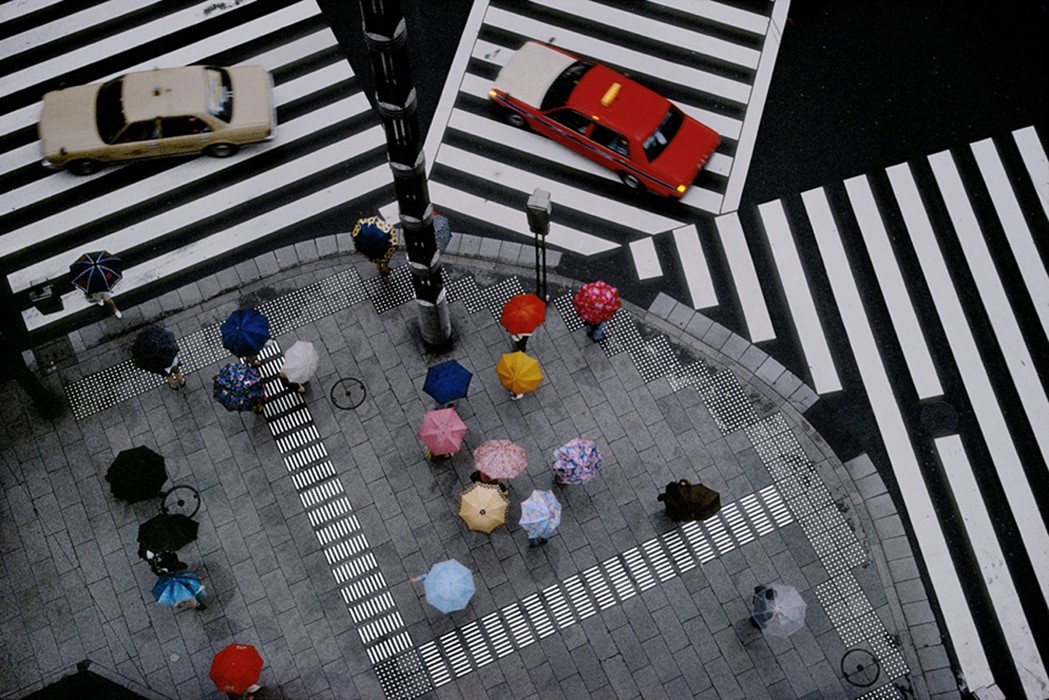
The element of serendipity that infuses Gruyaert’s work is a testament to the photographer’s presence of mind in the moment. “It’s a choreography, the way you move,” he says. “There’s a power thing going on, a strange possession. It’s a bit like a trance. I need to do it. I photograph all the time. It’s a way of being alive and being connected.”
Gruyaert’s connection to the world is more primal than words and ideas: it exists in the physical realm, and the pleasures of sight itself. “I’m not an intellectual. I have no concept. I don’t want to explain or say anything – I have no clue,” he says. “There’s one intention: being open and relating to things. It’s important to be sensitive to different cultures but there is no opinion about it. That’s why I am not at all a journalist even though I am in Magnum. But I am a documentary photographer, and in the end it’s important to say things about particular places and particular times.”
Eschewing the idea of objectivity in favour of the subjective response, Gruyaert embraces the immediacy of experience dictated by the qualities of light, colour, movement, and composition, which can make the still image endlessly fascinating. “What I love is to make is order out of chaos,” he reveals. “When things are complex, I am trying to make something which makes sense, which holds. I work for myself. I’m not thinking I am making art.”
Harry Gruyaert is at Howard Greenberg Gallery, New York from January 23 – March 14, 2020.
